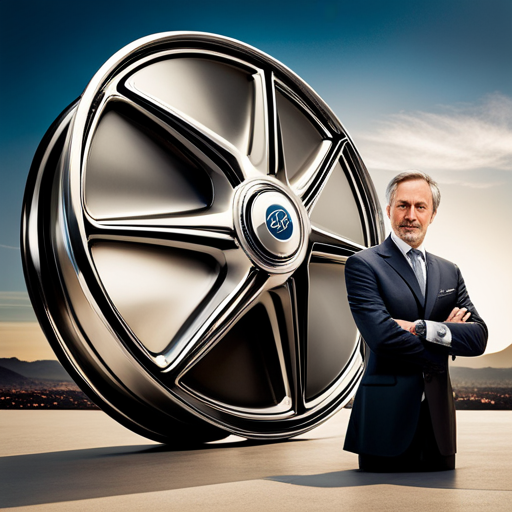The Evolution of Hubcaps: A Look Back at 40 Years of Innovation
Feb 13, 2024

Since its inception in 1979, our website has remained the premier supplier of hubcaps, wheel covers, hub caps, chrome wheel skins, and wheel simulators. Over the years, we have witnessed an incredible evolution in the manufacturing and design of these essential automotive accessories. Join us as we take a trip down memory lane and explore the significant milestones that have shaped the hubcap industry over the past four decades.
1979-1989: The Birth of Hubcaps
In the late 1970s, hubcaps were a standard feature on most vehicles. They were primarily made from steel, with a simple design that consisted of a circular cover, often with the manufacturer's logo in the center. The primary purpose of hubcaps was to protect the wheel hub from dirt and debris.
However, during the 1980s, hubcaps experienced a decline in popularity. This was due to the rise of alloy wheels, which were considered more stylish and did not require the use of hubcaps. Many car manufacturers started offering alloy wheels as standard or optional equipment, leading to a decrease in demand for traditional hubcaps.
1990-2000: Reinventing the Wheel
The 1990s marked a pivotal period for hubcaps. Manufacturers recognized the need to reinvent these accessories to cater to the changing demands of consumers. This era saw the introduction of more intricate designs and customization options. Hubcaps began incorporating innovative features such as built-in reflectors for enhanced safety, aerodynamic designs to reduce drag, and even technologically advanced materials.
Additionally, plastic hubcaps gained popularity during this time. They were not only cost-effective but also had the advantage of being lighter in weight. This shift towards plastic materials allowed for greater flexibility in terms of design, creating more visually appealing hubcaps.
2001-2010: Revolution in Design
As we entered the 21st century, hubcap design underwent a significant revolution. With advancements in computer-aided design (CAD) and manufacturing techniques, hubcaps became more intricate and visually striking. Chrome wheel skins emerged, replicating the appearance of chrome rims but at a fraction of the cost.
Moreover, in an effort to bridge the gap between hubcaps and alloy wheels, manufacturers introduced wheel covers. These covers were made of sturdy materials like ABS plastic and featured designs that closely resembled alloy wheels. This allowed car owners to enjoy the aesthetics of alloy wheels while benefiting from the cost-effectiveness and practicality of hubcaps.
2011-Present: The Rise of Wheel Simulators
In recent years, we have witnessed a growing demand for wheel simulators. These accessories go beyond traditional hubcaps and aim to replicate the appearance of different types of wheels, including alloy and chrome rims. Wheel simulators typically cover a larger surface area and provide a more realistic and seamless integration with the vehicle's overall look.
These innovative products are designed to appeal to car enthusiasts looking to enhance the appearance of their vehicles without the high cost of purchasing actual alloy or chrome wheels. Wheel simulators offer a cost-effective alternative while still maintaining the functionality and durability expected from hubcaps.
Looking Ahead: Hubcaps in the New Era
As technology continues to advance, the hubcap industry shows no signs of slowing down. Manufacturers are continuously exploring new materials, design techniques, and features to stay ahead of the curve. Going forward, we can expect even greater innovation in the form of lightweight materials, advanced aerodynamics, and integration with smart technologies.
At our website, we are proud to have been a part of this incredible journey over the past 40 years. From the humble beginnings of steel hubcaps to the cutting-edge wheel simulators of today, we have witnessed firsthand how hubcaps have evolved and adapted to the changing needs of car owners. As we look towards the future, we are excited to continue serving as the premier supplier of these essential automotive accessories, providing our customers with the latest innovations the industry has to offer.









































